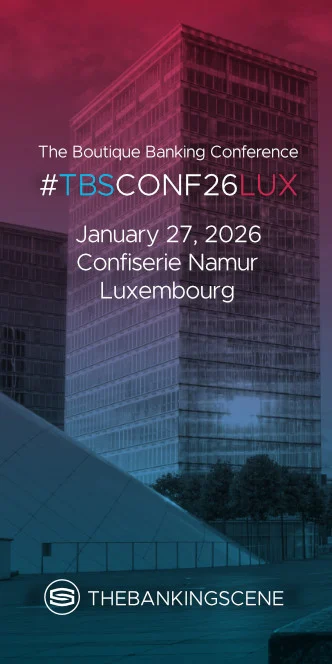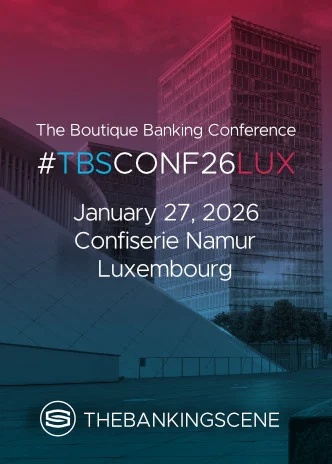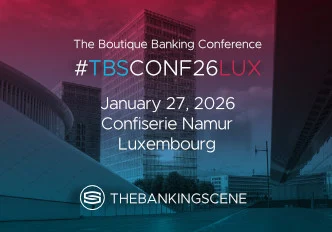
Insights & Opinions
Beyond Boundaries: How Collaboration is Redefining Banking in Luxembourg and Beyond
Mon, 10 Feb 2025


If you have seen me do a presentation, you will know how much I like the quote, “Banking is about realising dreams”. Banks allow people to buy homes and build businesses with future incomes; they secure your future with savings and insurance products; they give you one card to pay across the world.
Yet, in an industry increasingly defined by compliance, regulation, and digital disruption, we risk losing sight of this fundamental truth.
At The Banking Scene Conference 2025 Luxembourg, I took the stage to share this message. Inspired by an interview with Stefaan Roegiers of BIL, I spoke about the The Holy Trinity in Customer Centricity, a theme I will explore in depth in my upcoming book (New Ethos in Banking). The premise is simple: banks must rediscover their purpose as financial institutions and as trusted partners in people’s lives.
Yet, achieving this vision is far from simple. Banking has become a web of complexity. Regulations continue to mount. Digital transformation, while promising, often fragments rather than unifies. And in the rush to innovate, many banks struggle to retain their human touch.
So, what is the path forward? I believe the answer lies, at least in part, in collaboration. If there is one place where collaboration has become a genuine strategic advantage, it is Luxembourg.
In the panel discussion that followed my keynote, banking leaders provided valuable insights into how banks, fintechs, and regulators are working together in this small country to navigate the future. What follows are my thoughts about that conversation, an exploration of how collaboration, shared compliance efforts, and technology are shaping the next era of financial services.
Why Collaboration is No Longer Optional
Banking is no longer an industry where institutions can operate in silos. The landscape has changed, and the challenges we face—from rising compliance costs to digital security risks—are too vast for most single players to tackle alone.
Didier Richter, Head of Products and Services at BIL, articulated this shift well: “We cannot do everything alone anymore. The banking ecosystem is too complex, and working together allows us to share the burden while also discovering new opportunities.”
Emanuele Vignoli, CEO of HSBC Luxembourg, added: “Collaboration is not just about efficiency—it is a competitive advantage. Whether it’s regulatory partnerships, fintech cooperation, or shared infrastructure, banks that embrace collaboration will be the ones that thrive.”
That resonates well with my message, collaboration allows banks to:
- Build new services in a more cost-efficient way;
- Build flexibility and resilience and reduce dependence on internal understaffed developments;
- Learn from others;
- Gain inspiration for more innovation;
- Build that innovation much faster;
- Fall back on others for necessary, non-competitive pieces so they can focus their talent on building the heart and mind of a bank.
But what does collaboration look like in practice? Luxembourg provides a few compelling case studies, as we learned on January 28, 2025.
The Luxembourg Model: A Blueprint for Collective Innovation
Unlike in larger countries, where financial institutions are often fiercely protective of their proprietary systems, Luxembourg has embraced mutualisation—the practice of sharing infrastructure, resources, and regulatory frameworks for greater efficiency and innovation. Some of the most successful examples of this include:
- LUXHUB – Originally developed as an open banking compliance solution, this initiative has since evolved into a broader fintech innovation platform;
- LuxTrust – A shared digital identity platform co-developed by banks, government agencies, and businesses, ensuring secure authentication across financial and public services;
- LuxConstellation – A collaborative ATM network that allows banks to share infrastructure costs while enhancing customer access to cash services.
Didier Richter emphasised that LuxConstellation is more than just an efficiency play: “Cash is still a necessity, but ATMs are costly to maintain. By pooling resources, we’re not just cutting costs—we’re ensuring customers continue to have access to critical financial services.”
Meanwhile, Anne-Sophie Morvan, Chief Commercial Officer at LUXHUB, described how banks working together can turn compliance burdens into opportunities: “We started as a PSD2 compliance tool, but collaboration helped us evolve into something much bigger—an enabler for financial innovation across Europe.”
Luxembourg’s ecosystem approach serves as a model that could be replicated elsewhere. By emphasising cooperation over competition in non-core areas, banks can redirect their efforts towards differentiation where it truly counts—customer experience, innovation, and strategic growth.
In our geography of BeNeLux, we observe this phenomenon in every country, although some are more collaborative than others. In Belgium and the Netherlands, we witness cooperation in areas such as ATMs, Open Banking, and Identity.
Compliance: The Unexpected Catalyst for Collaboration
If there is one area where banks have been forced to collaborate, it is compliance. Rising regulatory costs have made it financially unsustainable for institutions to manage all compliance efforts independently.
Claude Marx, Director General of CSSF, explained the regulatory perspective: “On one hand, compliance is a challenge. On the other, it is a driver of collaboration. We are seeing more industry-wide initiatives on KYC, cybersecurity, and ESG reporting because it simply makes sense for banks to tackle these issues together.”
A prime example is the rise of KYC utilities, which allow multiple banks to outsource customer due diligence to a centralised entity, reducing duplication and enhancing data accuracy.
Emanuele Vignoli highlighted why this shift is critical: “Compliance is one of the largest cost centres in banking today. By collaborating on fraud prevention, KYC, and cybersecurity, we can allocate more resources to customer service and innovation.”
As DORA (Digital Operational Resilience Act) comes into effect, cybersecurity collaboration will become even more critical. Banks cannot afford to handle digital threats alone—shared intelligence and coordinated security measures will be essential.
Technology: The Great Connector
Technology is often framed as a disruptor, but the panellists emphasised that it is also a collaboration enabler.
AI and Compliance Automation
AI is set to revolutionise regulatory reporting, moving banks from manual compliance processes to real-time, AI-driven analysis. Claude Marx pointed out: “Compliance reporting is still largely a manual process. AI could enable a shift toward a pull-based system, where regulators access real-time data without requiring extensive filings.”
This shift would reduce compliance costs and improve the accuracy and transparency of the data provided.
Blockchain and Digital Identity
Another promising frontier for collaboration is blockchain-based digital identity verification. Instead of each bank managing its own KYC records, a shared, immutable system could verify customer identities securely and efficiently.
Claude Marx, Director General of CSSF, pointed out that regulatory complexity makes collaboration essential in areas like KYC and compliance: “We have seen banks investing in KYC utilities to neutralise the KYC effort and reduce costs. Some institutions have completely outsourced their KYC processes to a third-party provider. This kind of collaboration allows banks to focus their resources elsewhere.”
With the growing impact of DORA (Digital Operational Resilience Act) and increased regulatory scrutiny on data security, banks will need to explore shared solutions for compliance, fraud prevention, and identity verification.
The conversation made it clear that banks that collaborate on compliance challenges will have more resources to innovate in areas that truly matter: customer service, product development, and financial inclusion.
The Future of Banking: A New Ethos
As the panel discussion wrapped up, I reflected on what this all means for the future of banking. The industry is at a crossroads. We can choose to continue down a fragmented path, where each institution fights its battles alone, burdened by rising costs, regulatory pressures, and competitive threats.
Or, we can embrace a new model, one where banks, fintechs, regulators, and even competitors work together to build a more resilient, customer-centric financial system.
As I wrote in The New Ethos in Banking, trust is the foundation of financial services. In today’s world, trust is built through transparency, cooperation, and shared responsibility, and something that means you work with others to ensure sufficient internal resources to work on a meaningful transformation, one that embraces ethics and values.
The future of banking will not be built in isolation. It will be forged through partnerships, trust, and a commitment to something greater than profit.
Join us at our flagship conference in Brussels on May 22, where industry leaders will share their insights on top-of-mind topics for banking, payments, fraud and fincrime professionals today.



